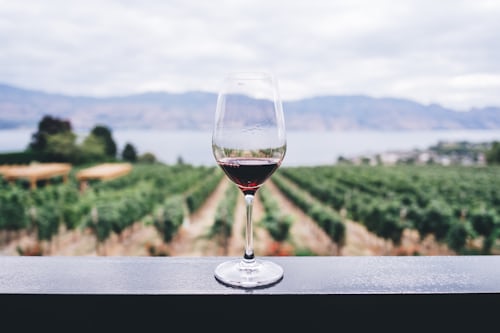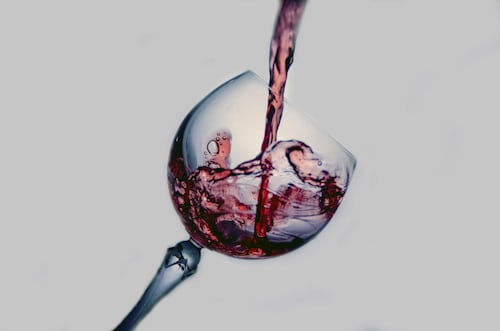Red wine is probably the most popular choice of wine in the world. With so many variations, combinations, and flavor profiles, the potential creations, and styles of red wine seem to be endless. Human beings create red wines and experiment with their techniques to produce a wide range of wines for centuries. Here’s a guide on how to drink red wine for beginners!
Whether you’re just starting with wine or working in the industry, this contains numerous useful resources to complete your wine knowledge. Let’s start!
What Is Wine?

Wine is an alcoholic beverage made of fermented grapes. Fruit wines, or country wines, are also made from fermented fruits. In the traditional sense, however, wine is made from grapes.
What are the differences in the grapes and grapes that we eat?
The raisins you eat are different from the grapes you eat. The vinification of most grapes is Vitis Vinifera, while the table grapes are made of Vitis Lambrusco or other species.
Between the two, there are many differences. Table grapes have high production, are big, have thin skins, less sugar and acidity, and less flavor overall. Wine grapes yield less by wine, are smaller than table grapes, have thicker skins, more sugar, acidity, and a more magnificent taste overall. This gives the structure and taste of the wine.
Wine Composing Elements

Before you learn how to drink red wine for beginners, you should know its elements. Modern vinification consists of many elements creating the final product.
Grapes
You need good grapes in order to make good wine! Although indigenous species continue to be used today, wines have since been carried worldwide, and new grapes are grown every day to grow in the required climate and region.
Yeast
Grapes and all fruits naturally contain yeast, which, when exposed, begins to ferment the juice. While some winemakers still choose to use indigenous yeast, most winemakers choose to use commercially selected yeast.
Yeasts produce by-products that produce certain flavors and emphasize various aspects of wine. Winemakers can choose certain commercial yeasts based on their desired results.
Acid
The acidity of the grapes is extremely important during harvest. It is one of the key aspects of a balanced wine and contributes to aging. Some new world wineries will add acid to their wines during the winemaking process.
It’s not lawful to use acid additives in most Old World wine regions, so grape growers must pay particular attention to what happens in the vineyard and harvest when the acid is highest in grape.

Tannins
Tannins occur naturally in plant skins and seeds. They are also found in barrels of oak and chips for the aging of wine. They taste bitter and have the color you see in the wines. Tannins add body and character to wine and let them age well.
High tannins make your mouth feel sticky and dry. The amount of tannins in red wines is much higher than white wines because they ferment with the skins on.
Additives
Modern winegrowers use additives routinely during the process of winemaking. Although some of these additives in some regions are illegal, they are standard practices in most New World countries.
During fermentation, enzymes are added to wines to prevent bad native yeast from growing and overcoming the beneficial yeast. As with commercial yeasts, enzymes have been grown to have different advantages for winegrowers.
Sulfur is added as an anti-oxidant preserver to wine. Organic wines or sulfur-free wines are too quick to age, have a shorter lifespan, and oxidize faster than sulfur wines. Gum arabic was a common ingredient in winemaking to preserve and enrich flavors.
In order to maintain tannins, color, and flavor, polysaccharides are added to allow the wines to age longer.
Fining Agents
Sadly, many wines aren’t vegan. For centuries, animal parts as ingredients for wine finishing and filtering have been common practices. Egg whites, gelatin, and bentonite clay are still modern agents for filtering your wine.
After fining agents are used, wines are forced to remove these fining agents and all other particles utilizing large machine filters.
How To Drink Red Wine For Beginners

With such a variety of red wine types, sitting in front of the red wine flight can be a little intimidating. Below, we have outlined a basic degustation guide that can help you experience red wine in front of you and not only drink.
You will more likely discover the best red wine for your taste by following these tips. Here’s how to drink red wine for beginners!
1. Look at the Label.
Even if you know little about red wines, simply by looking closely at the bottle, you can learn something. You know where the grapes came from when you visit a particular vineyard and try its offerings. But if you purchase wine at the store or in a restaurant and want to make a smart choice, knowing the wine ‘s source is an excellent starting point.
This is, of course, a comprehensive explanation, and exceptions to these rules will always be made. In general, winemakers want to create something that their regions wouldn’t expect. Microclimates or soil variations in grapes produced in these areas can have a very drastic effect. These small nuances will ultimately change the wine ‘s overall profile.
2. Glassware
Before pouring a taste, make sure that you choose the right glass for your red wine. All reds are best in large, rounded glasses.
However, in a shorter glass that brings your nose closer to wine, lighter reds do best. Bolder reds usually go into a little taller glass, which allows the intense aromas to move around before reaching the nose.
3. Pour and Swirl Method
After a little while, you have left the wines to breathe or decant. You may pour a small amount into a glass. This should not be done carelessly.
As you pour the wine into your glass, make sure you note the body of the wine. Now, swirl the wine gently in the glass. Note the red wine body, the density, and whether bits of solids are floating around.
Wines almost opaque usually come from warm weather regions and are only permitted to age for a short time. If the swirling wine leaves “legs” on the glass sides, this may be an indication of the alcohol or sweetness of the wine.

4. Take Sniff.
Now is the time to identify your wine’s notes by putting your nose in the glass and taking a big whiff of the fragrances of the wine. Try to make your nose close enough to the glass rim to give you a clear fragrance. There are three levels of aromas that you can discern when the wine smells:
First, you will get the main aroma that is likely to be fruit-based; after all, all the wines are just excessive fruit juices. Try to find aromas outside the grapes.
More Information
Are you feeling any fruits like blackberries, strawberries or currants? Close your eyes and try to identify what is different from what your first instinct says to you. Try as thoroughly as possible to describe the smell: Is it soft? Hard? Intense? Sweet?
Second, there are hints of the flavors created during the process of winemaking. You may feel some common aromas of rose, vanilla, pepper, or mint. It will probably practice before you can feel these subtle levels, but you will eventually develop it.
Finally, the closing note of the aroma of wine could reflect the aging vessel like oak. You may get a short smell of leather, smoke, or coffee here. It could be something that you can’t put your finger on immediately, but that you could recognize after you have tried it.
5. Give it a Taste.
Finally, you can have a little sip. But, wait, wait! Don’t immediately swallow your first red wine snack. Let it roll for a moment on your tongue. You’ll want to see if the wine is sweet or if it has a lot of tannins.
Or maybe this particular red wine has another intense flavor you didn’t expect. Does the wine lingering in your mouth help you understand better any notes you may have smelled?
Pay attention to the aftertaste after swallowing the sip, and how long the aftertaste lengthens on your palate. This is a very distinctive feature of red wine.
You can spit it out, too. Ask any sommelier, and they’ll advise you to do just that. If you do, nobody will be offended. Many red wine degustation guides will not mention this as an option.
This is because it enables you to fully analyze and compare different types of red wine and do so without getting drunk too fast. You will be able to keep your senses intact and analyze them more precisely.
6. Food Pairings
Now that you know what kind of red wine suits you best, concentrate on creating a fabulous meal as a complement to your wine. Light red wines are good for poultry, but heavier and bolder red wines are more suitable for beef or cured meats. You can get away with rich seafood like a crab with light red wine, but usually seafood with white wines.
Final Words
At the heart of wine is a drink that others like best. A bit of knowledge of wine goes a long way by opening doors to new aromas and styles. Exploring wine is an inexhaustible adventure that your friends and family will need to enlist for. It takes a short break to raise awareness of what you drink. Knowing what you want makes it much easier to find similar wines consistently. With this guide of how to drink red wine for beginners, you will surely learn how to appreciate the taste and beauty or red wine.





